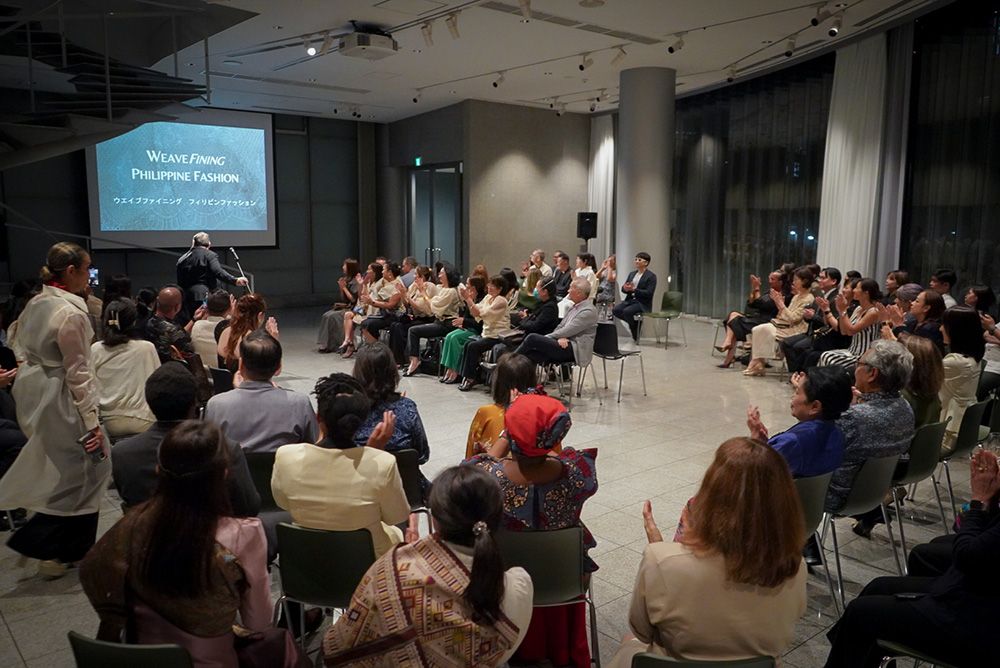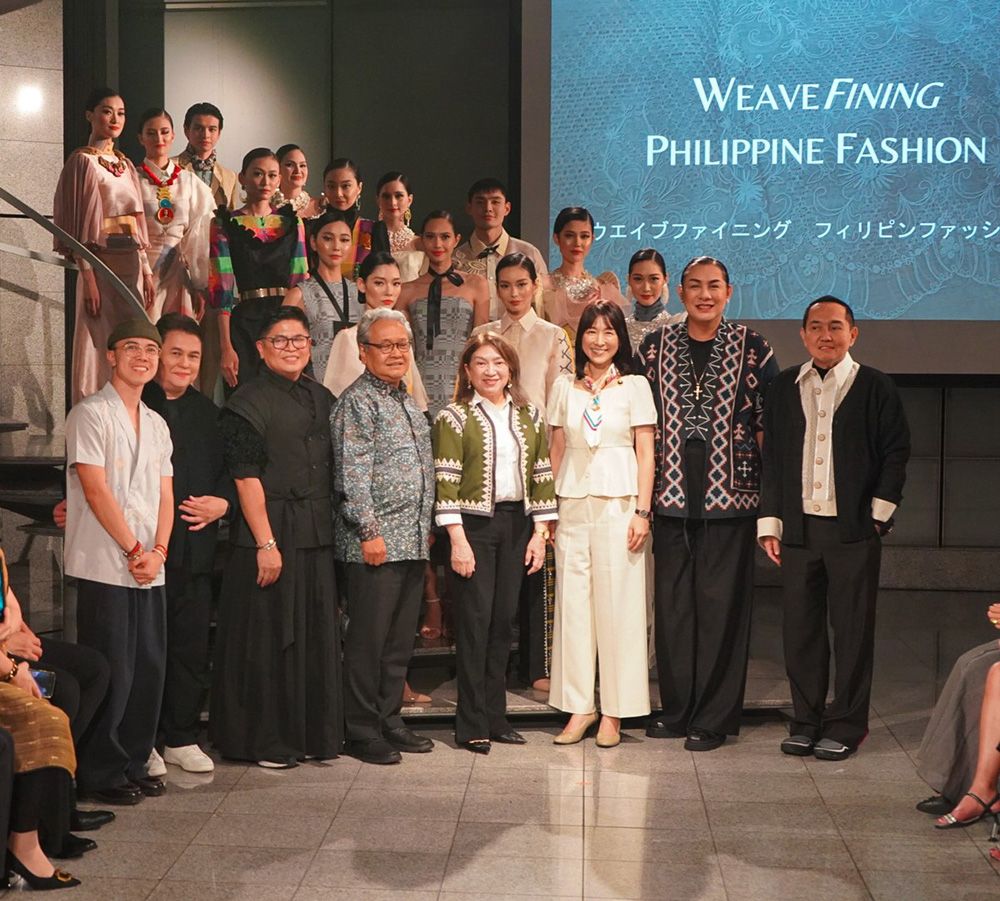TOKYO – Five renowned Filipino fashion designers, namely Randy Ortiz, JC Buendia, Wilson Limon Jr. (NIñOFRANCO), Dodjie Batu, and Aztec Barba, showcased their creations featuring Philippine fabrics and weaves in a special runway presentation directed by veteran fashion show director Jackie Aquino at CARATO71 in Shibuya on Sept. 15.
Hosted by the Philippine Embassy in Tokyo, in cooperation with the National Commission for Culture and the Arts (NCCA), the show, entitled “Weavefining Philippine Fashion,” aimed to promote the use of various local weaves in both traditional and modern clothing.
“The Philippines’ tropical landscape blessed us with a variety of materials from which we derive our textiles. We have fabric from piña or pineapple, banana, silk, cotton, and abaca, among others. Our history, on the other hand, influenced our design and weaving traditions,” Philippine Ambassador to Japan Mylene Garcia-Albano said in her welcome remarks.
“Through the creative lens of five of our country’s top fashion designers, we would like to take you on a short journey into the world of our rich, colorful, and unique textiles, our traditional weaves, and our cutting-edge designs.
“Through events, such as this special runway presentation, we wish to honor the legacy and ingenuity of our indigenous communities who continue to gift our country with the weaves and fabrics we will see tonight,” she added.
Aquino, on the other hand, noted that this group of accomplished designers champions handmade Philippine textiles in their designs and is passionate about keeping the weaving tradition alive. Limon Jr. (NIñOFRANCO) focused on the use of the T’boli ikat and Bagobo beading. Buendia re-imagined 100% cotton inabel from the Ilocos Region. Batu showed ensembles of local woven cloth of the Maguindanaoan inaul with piña cocoon and jusi. Barba highlighted the inaul of Cotabato and Blaan Gintlo weaves from Sarangani. Ortiz showcased locally made and engineered textiles and Filipino ingenuity, including brocades and embroidery on 100% cotton inabel from Ilocos Norte.

“As a tradition, weaving is part of our cultural identity, and needs to be preserved. It is a sense of responsibility as we are keepers of this tradition, championing handmade fabrics from the Philippines,” he said in his speech.
Moreover, Tetta Ortiz Matera, one of the organizers of the show, conveyed to the Filipino-Japanese Journal (FJJ), “We have so much talent in the Philippines to showcase. This is just the beginning, hopefully, especially here in Japan.”
When asked if it will get even better next time, she enthused, “Maybe just different, but just as beautiful.”
It can be recalled that the Philippine Embassy organized an exhibit and lecture on local fabrics and weaving during the National Day celebrations in June, featuring the terno, the country’s iconic national dress.
“We really aim to share our culture with the Japanese,” Garcia-Albano told FJJ.
The runway event is part of the Embassy’s year-long celebration of the 125th Anniversary of the Proclamation of Philippine Independence. - Philippine Embassy – Tokyo, with report from Florenda Corpuz


